Lulin dating compaign: update on Jan. 31
Jan 31st
I drag myself out of bed again at 4:30 a.m. It's another very clear night, with limiting magnitude around 5.4 (using IMO method -- but this do not mean that tonight is better than last night, since last night I had to use a not-well located reference field as the cirrus block the favourite one). I get the 13-cm refractor out and set it up, but it takes me a little bit longer than last night to see the comet.
With a telescope, the sky quality seems to be slightly better than last night, the faintest star I have been able to see is TYC 6174-464-1 at 12.28 mag, but (26) Proserpina (12.5 mag) is still invisible. Galaxy NGC 5890 (at 12.6 mag) is only 10' away according to the map, unsurprisingly it's not visible, too. Tonight I have much more options on comparasion stars -- but the observation doesn't make me feel exciting. I estimate the total brightness of the comet to be around 7.3 mag using Morris method, with six comparasion stars at mag 6.17-7.97, while the coma diameter to be 7'. The comet's look does not change much except a 30" dense core run out tonight. Tonight's estimate is 0.5 mag fainter than that of last night, I think tonight's one is more reliable since only two comparasion stars were used last night.
Shortly before the astronimical twilight starts, I also give a try on NGC 5892, a galaxy about 3 degrees away at 12.0 mag, but with no luck. Seems its surface brightness is still too dim. I then shift back to Lulin and see it off in the twilight (still barely visible even after the nautical twilight started!).
I'm not sure when would the next dating occur. I'll be away for a three-week tour in the country soon, and the rainy season will begin at Guangzhou before I come back. I'll try if I can spot it with naked-eye when I arrive at Mt. Huangshan in mid Feburary.
Second dating with Lulin
Jan 30th
As Comet Lulin is now approaching the Earth, the questions such as "how is your comet" or "did you take look at your comet" frequently fly into my ears. When replying these questions, I'd love to refer the comet as "my girl", and a standard reply is "no, I haven't date with her since last August". What's more, for a co-activity with Lulin's "heaven" show, I let my hair grow to a record length, and promise to my friends that "I will make it up according to the appearance of Lulin's tails". But actually, up to now, I have no time to make it up, and to be honest, no idea on how to make it up. I used to keep my hair very short. (the "public" reason is that the Lulin's tails are generally not visible yet)
As several cold fronts went over the Pearl River Delta around the Chinese New Year's Day, the air quality had improved to a very remarkable level. On Jan. 27, the Air Pollution Index (API) of Guangzhou's downtown was even down to 14 (while the average API of the downtown area is around 70-80). The Astroweather Panel suggested the sky would be clear in the morning of Jan. 30, so I went to my house at the countryside for a 4-day stay on Jan. 28. The air quality there was even more surprising -- with API lower than 4. Such an excellent air quality is rarely seen in the well-polluted Pearl River Delta area.
When I drag myself out of bed at 4 a.m. in the morning of Jan. 30, the sky did cleared up, although not as that good as Astroweather Panel predicted -- there are still a few cirrus on the sky. I checked the values of a nearby meteorological station, the temperature is 9.8C, not very low yet. So I carried by 80-mm f/5 refractor out. Except the cirrus, the sky is remarkably clear, I estimate the limiting magnitude to be 5.1 with IMO method -- also a record for this observing site. I wait for a few minutes until the cirrus move away from Libra, then point the telescope to the area. I don't bring my laptop out -- I was always very lazy and would not bring my laptop to the telescope, until I admit I'm unable remember the exact location of the target I want to observe. But this time I get a bonus, a fuzzy ball appeared in my view within only half a minute. I went into my bedroom, check the finding map, and confirm it's indeed "my girl".
I moved my biggest telescope -- a 13-cm f/6.4 refractor -- into the observing field. The 13-cm has a much better quality than the 8-cm. I point it to the comet, and try to estimate the comet's brightness using Sidgwick method. I'm not a good visual comet observer, and there are not sufficient comparasion stars around the area, so the observasion may be of some errors. The first estimate is 6.1 mag, but shortly after that I find out the comet is just occulting with a 10.72 mag star (TYC 6175-46-1), so I wait until it moves away from the star and make a second estimate. The final estimate is 6.7 mag with coma diameter to be 7'. The comet is slightly elongated over the ecliptic. After observed the comet, I make some attempts to see how deep I can go. A 12.16 mag star (TYC 6175-765-1) is visible, although not easily, but an asteroid nearby (26 Proserpina, around 12.5 mag) can not be seen, so the limiting magnitude for the 13-cm refractor at this night should be around 12.2 mag.

The first sunshine on a piece of score (taken with N79's micro-imager function)
The twilight appears and marks the end of observing, I watch a beautiful sunrise (I always get excited about sunrises and sunsets!) at the observing field before go back to sleep. The visibility is also very remarkable today -- the 50-km away Mount Apoliu is clearly visible in twilight over a small patch of "cloud-sea".
- The first sunshine on a piece of score (taken with N79′s micro-imager function)
- My 13-cm refractor and I in twilight
Greeting the year of Ox
Jan 28th
The world seems to be more and more familiar with Chinese's most imprtant day -- the Spring Festival, or Chinese New Year's Day. I would prefer the later one, as the event is not only a festival, but also the opening of a new year, using "Day" might be better on describing the importance of the day than using "Festival". Although in Chinese language, "festival" or "day" shares the same charactor when refering to the meaning of an annual event ("节", Jie), but it has a very slight different when being translating back into English -- as we generally don't call Christmas Day as "Christmas Festival"! However, in the following, I'll still speak "Spring Festival" since this noun has been used for long.
The coming year will be a year of Ox. Although all the Chinese will enjoy the same festival, there can be large difference on celebration way across the country. Today I'll show you how Cantonese (a.k.a. Guangzhou citizens) celebrate the festival, since I have lived at here for years.

The main entrance of the Tianhe Flower Market (panorama), the big character is "Ox"
The most classic and unique ceremony at Guangzhou for the Spring Festival celebration is the Greet Spring Flower Market ("迎春花市"). This might be the biggest difference compare to the northern cities, since Guangzhou is located in the south of the Tropic of Cancer, the flowers can grow and blossom even in winter. All eight districts, as well as some nearby cities (such as Foshan), will hold Flower Market, but those markets in downtown area are the biggest and hottest.
The market would be opened a few days before the New Year's Eve, but most people will choose the Eve for visit. If you go to the market in the evening of the New Year's Eve, you should be well prepared for heavy crowds. When I was very young, my family went to the Flower Market every year, and the visits were mostly finished by missing someone, because there were too many people.
Why the Cantonese need to buy flowers at the Flower Market? As far as I know, that is partly because an old Chinese saying, "flowers blossom riches and honour". As the flowers are not likely to grow in the most Chinese cities, a blossom flower at the beginning of a year will have a very special meaning.
However, flowers are not the only product at the market. When you visit the market, you will see windmills -- hold in the customers or are being sold. I don't know if buying windmills is also a Cantonese custom, but I doubt if there are any people who would like to hold a windmill in the cold northern cities. The meaning of windmill is quite clear -- because there is a Chinese phase goes as "turning (for good) fortune", and "turn" and "rotate" shares the same Chinese charactor. People believe that good fortune will come in the forthcoming year when the fans rotate.
There are also other habits -- for example, hanging red lantern and the "fortune" sign. The "fortune" sign should be installed up-side-down, why? That is because in Chinese language, the pronunciation of "up-side-down" is similar to "coming", so it's a custom to install the sign up-side-down to welcome the "fortune". It's also a custom to eat fish around the New Year's Day, the reason is somewhat similar: a Chinese saying goes "surplus in every year", and the pronunciation of "surplus" is the same as "fish". The most important custom across the country -- even for those overseas -- is having a family reunion dinner in the New Year's Eve, and this is one of the main reason why many Chinese are willing to board a heavy train back home during the Spring Move.
The Flower Market will close exactly at 12 a.m. of the New Year's Day. The unsold flowers will be ruined, because the custom is that the flowers must be bought and placed before the New Year comes.
According to my parents, in the old days the New Year's Day is the happiest hour for kids in a year, because only that day would the kids to be gave new cloths (must dress on in the New Year's Day), had nice food to eat, and earn lucky money. They would also enjoy a great time with the firecracker. Nowadays our teens will not treat new cloths and nice food as a major entertainment, we are more likely to find ourselves sitting bored at the restraut, while our parents are busying meeting the long-time-no-see relatives with emotion. But after all, there are still something for our teens to be busy with when the new year comes -- sending and replying the flood-in mobile phone messages and e-mails for New Year's greeting!
- The main entrance of the Tianhe Flower Market (panorama), the big character is “Ox”
- Panorama of a corner at Tianhe Flower Market
- The charactor “Ox” at the entrance of Tianhe Flower Market
- Lantern at the Flower Market
- Some teens choose a meaningful way to greet the New Year — become a volunteer
- Policemen’s busy hours; they are not able to enjoy the New Year’s Eve with their families
- Flower Market and the Zhongxin Building (a geographical sign of Guangzhou)
- Someone is advertising his windmills at the Flower Market
- The crowd at the Flower Market
大学城的日落和日出
Jan 25th
这应该是小灰(N79)的第一部影集,大家给点掌声吧。尽管其拍照能力有口皆碑,但我的不少要求对小灰来说还是过高,比如在色调丰富的晨昏时分拿它来拍全景图,各位就切莫见怪啦,其实对于手机来说已经干得很棒了。
- 1月11日日出
- 1月10日日月同辉(全景图)
- 1月11日日出(全景图)
- 1月10日月出(全景图)
- 似乎还没在这个赝品前留过影
- 1月11日日出
巴赫/古诺《圣母颂》——叶雨搭档首演
Jan 24th
孟子曰:“独乐乐不如众乐乐”。与小雨同学达成联袂意向已经近一年了,但由于地域分隔的缘故,至今还未合奏过。是日也,小雨从佛山来穗,二人到正佳广场五楼租了间琴房,乐乐了一个下午(委屈了钱包)。合奏的曲目包括莫扎特的《G大调第三小提琴协奏曲》第一乐章(二人断断续续地准备了差不多一年)、巴赫/古诺的《圣母颂》和波隆贝斯库的《叙事曲》等。由于环境与录音设备(手机录音)均欠佳,只择一《圣母颂》以飨诸圣:
[audio:2009/01/0124.mp3]
Johann Sebastian Bach (1685-1750) and Charles-François Gounod (1818-1893)
Ave Maria
Performed by Ye Quanzhi (violin) and Liang Qianyu (piano)
(*): Recording was made by a not-well-positioned mobile phone
A glimpse of the Spring Move
Jan 23rd
Since I'm studying at where I live, I have no need to take part in the Spring Move. The activity has been remarked as the "largest human transportation", but I had no concept of it, until the occurrence of a serve weather last year. The bad weather lasted for weeks, and millions of people were reported to be stucked on the way home. At Guangzhou, the city I live, there was about 1 million people stucking at the railway station at the worst period. During those days, the stadium near my house was opened for temporary stay of the stucked people, and I could hear the broadcast, announcing the most recent railway recovery progress, all night long.
The newspaper says the goverment is much better prepared for any unexpected event this year, and I'm curious to see what's actually happening at the railway station besides those terrifying images of heavy crowd, printed on the newspaper or other media. So I plan to see some of my friends off at the Guangzhou railway station.
I don't see what I had expected. Although there are indeed many people going in or out of the underground station, I had experienced more crowd condition in the underground station during the rush hour. Not very crowd yet! At least, not as crowd as I had expected. It only takes no more than 10 minutes for me to guide my friends to the entrance -- many blocks as well as the indicator have been set up to guide the passengers to the proper entrance. The see-off people are not allow to enter the station building during the Spring Move period, so I say good-bye to my friends at the entrance.
I left with a decent impression that everything seems to be in order, but for my friends, the hard time has just begun. After boarding the train, they would have to remain in their seat for many hours -- 20 hours for the fewest -- until the train arrive at their destinations. A bed seat? Not quite probable. In the opposition, in order to carry more passengers, there are some "sitting bed seat" tickets on sold, that is, the beds are used for sitting, not sleeping. Almost none of the trains offer mobile phone charging service, so it's virtually not possible to help them to spend the boring hours by exchanging messages. It's hard for me to imagine spending a day like this -- I had once sitting on a train for 23 hours and felt not bad, but there were not much people on that train at that time, so I could lay down on the seats for sleep. But during the Spring Move, "You are very lucky already if you can manage to get a seat ticket -- many people are standing around me!" my friends said.
A funny story here. After the minister said that the Ministry of Railways will do their best to "ensure no student would have to stand to get back home", a friend of mine went to the ticket office and ask for a ticket to Tianjin. "Seat ticket are all sold out," replied the conductor. "That's all right, I want a stand ticket for student." my friend said. "I'm afraid I'm unable to sell you a ticket," the conductor said, "the minister said we must ensure no student would have to stand to get back home."
When my see-off campaign proceed into the last leaver, Jinghua, who was going to board a train that will run for about 38 hours before arriving at her destination, Changchun. I asked her if sitting for 38 hours would be a difficult challenge for her.
"Well -- actually, I have got used to it," she replied with a smile, "and it really feels great to be getting back home!"
It's report that China's railway transportation ability will be raised significantly in the year 2012. Although the Spring Move this year seems to be much better organized than last year, I do hope that my friends and all others will be no longer suffered from such an uncomfortable "adaptation" in future.
- Square of Guangzhou Railway Station on Jan. 17
- The crowds in the MTR Guangzhou Railway Station
- The crowds in the square of Guangzhou Railway Station at late Jan. 19
![大学城是飙车的好去处[07.10.25]](https://y234.cn/wp-content/uploads/2009/01/e59bbee5838f069.jpg)
小小黑眼中的世界
Jan 17th

日落{08.11.09}
小小黑(诺基亚3110C)自2007年8月至2009年1月服役期间,拍摄了约2000张照片。在小小黑退役之际,为向其表示敬意,特精选出其所摄之精美照片79幅,以飨读者。(注:出游所摄或涉及个人隐私之照片不在选择之列)
- 大学城是飙车的好去处[07.10.25]
- 飙车胜地:中环路[07.10.09]
- 飙车途中[07.10.09]
- 中大某热门讲座[07.10.09]
- 老师示范如何进行头部包扎[07.10.10]
- 假冒伤员[07.10.10]
- 午饭以后[07.10.16]
- 为小黑卖广告[07.10.17]
- 中环路日落[07.10.19]
- 内内环路[07.10.22]
- 概率统计课[07.10.23]
- 剑术[07.10.23]
- Guang Zhou Da Xue [07.10.25]
- 下课[08.01.09]
- 贵娇师妹可是爬山高手[08.04.17]
- 澳大利亚帽[08.03.01]
- 基士兰广场音乐会[08.04.08]
- 这幅地铁广告挺有创意[08.07.16]
- 奥运火炬传递一瞥[08.05.07]
- 实验室“地震”[08.05.14]
- 老弟[08.05.17]
- 广州市罕见日落[08.05.29]
- 广州市罕见日落[08.05.29]
- 广州市罕见日落[08.05.29]
- 蒲公英盛开时节[08.06.02]
- 太阳直射[08.06.19]
- 水浸[08.06.19]
- 云影[08.06.20]
- 大学城月出[08.06.20]
- 呃?[08.06.26]
- 叫楼[08.06.26]
- 台风过境[08.07.01]
- 大锅盖[08.07.02]
- 传设学院楼[08.07.04]
- 日落实验室[08.07.04]
- 风云突变[08.07.07]
- 三剑客[08.07.10]
- 大学城日落[08.07.10]
- 莫名烟雾[08.12.24]
- 坏笑[08.09.02]
- 点[08.09.02]
- 诡异的天[08.09.04]
- 成长的柠檬树[08.09.15]
- 08级在军训[08.09.17]
- 云[08.09.24]
- 台风黑格比过境[08.09.24]
- 世界上本没有路[08.09.25]
- &小石头[08.09.25]
- &小京花[08.09.25]
- 成长的柠檬树[08.10.26]
- 眼睛猫[08.10.28]
- 打乒乓球[08.10.29]
- 斩[08.11.05]
- 荷兰乐团访华[08.11.05]
- 云[08.11.08]
- 日落{08.11.09}
- 日落[08.11.09]
- 月出[08.11.09]
- 日落[08.11.09]
- 日落[08.11.09]
- 日落[08.11.10]
- 月出[08.11.11]
- 日落[08.11.11]
- 月出[08.11.11]
- 眺望[08.11.11]
- 眺望(蓝色版)[08.11.11]
- 日落[08.11.11]
- 日落[08.11.11]
- 金星与木星[08.11.11]
- 老师与学生互换[08.11.19]
- 天空的微笑[08.12.01]
- 晨希助理[08.12.01]
- 七中[08.12.07]
- 天河[08.12.11]
- 林[08.12.12]
- 光学飞踹[08.12.17]
- 桥[08.12.18]
- 桥[08.12.18]
- 素描[08.12.25]

漫步喀纳斯之三:从小喀纳库勒湖到喀纳斯
Jan 13th
初稿 2009年1月13日 修改稿 2009年1月14日
我迷迷糊糊中觉得有亮光正照着我,于是揉了揉眼睛,睁开眼一瞄,原来是一束耀眼的阳光透过蒙古包的开口,正巧照在脸上。我连忙看了看表,原来已经早上十点半了,算下来只睡了小半个晚上。不过透射进来的阳光是如此地有生命力,让我的睡意像日出后草上的露水一样很快挥发了。今天的任务是穿越也买盖提草原到达喀纳斯乡,路程约为20公里。由于路相对比较平坦,Apple和小牛在两个小时前已经徒步上路;而我由于脚还没有完全好,为了不至于妨碍接下来的行程,仍打算骑马前进。大约十一点,我和古丽娜就从蒙古包出发了。鉴于老马爱同新骑手开玩笑的个性,古丽娜把她的枣色马换给我骑,自己骑老马。
穿越也买盖提
喀纳斯湖以东的广袤山区被哈萨克人称为“门琼库尔”,意思是“一千个水坑”,翻译过来便是千湖地区。然而这里是否真有一千个湖泊,似乎不太容易考证,不过数量级上应该差不多,因为我一路上见到不少已经干涸了的小湖,最大的不过游泳池大小,看来是冬季积雪融化形成的季节性湖泊。另外一类湖泊则是在冰川作用下形成,诸如小喀纳库勒湖。它们由积雪融水及当地降水补给,终年不涸。

那起伏的淡绿色之中,还有一块块白云配上的墨绿色动态效果
走到小喀纳库勒湖所在山系的边缘,停下脚步用心观赏,你会发现自己正在俯瞰一片巨大的高山草甸带,它一直延伸到北方十几公里开外那气势磅礴的雪山下面。这片草甸就是也买盖提草原。欣赏完这一大自然设计的宏伟景致,我们便沿着一条布满乱石的崎岖小径从山岭上小心地走入草原当中。随着地势的缓和,两匹马开始小跑起来,我享受了一阵马上驰骋的快感,十分惬意。环顾四周,只见那起伏的淡绿色之中,还有一块块白云配上的墨绿色动态效果,动静相衬,真是让人赏心悦目。牛羊们就在这样漂亮精致的动画地毯上闲逛和吃草,那一份闲情逸志,不由得又让人心生羡慕。偶过一座小丘,见得一头牛屹立在顶部,如同英雄的雕像一般,傲然俯视着这片仙境之地。看着它,我觉得我不是来自远方的游客,只是来朝见的臣民。
喀纳斯湖
大约午后两点,我们到了草甸的尽头,开始穿越海拔约1900米的针叶林带。四周都是十几人高的松树,像列成方阵一样的士兵一样站得笔直。虽然说是森林,但树与树之间却默契地间隔得很开,显得热闹而不拥挤。骑行其间,丝毫不感到压抑。

松林

松林与羊群
穿过松林,我们沿着山谷继续往下走,这时碰到遇到了一大群正准备到草原上郊游的牛羊。两位哈萨克老头一边扔石子催牛羊前进,一边远远地和古丽娜打招呼。下午三点半,绕过最后一道山脊以后,一个长长的湖泊出现在4公里开外的山脚下,看上去就好像一块由墨绿色天鹅绒衬托的淡灰蓝色的纯玉。无须说明,那就是喀纳斯湖。同喀纳斯湖一同出现在视野里的,还有远处山坡上曲曲折折的公路,以及喀纳斯乡里的手机信号塔。
走下最后一道山岭,我重新置身于现代化的生活当中。将我引入喀纳斯乡的是铺得整整齐齐的水泥小道(其实喀纳斯乡现在已经不是乡村,而是一个旅游区一样的地方);两侧单调地罗列着与四周景色格格不入的小洋楼;裤带里,整整一天半没收到信号的手机滴滴叫着,提醒我查看新的短信;载满旅游者的小客车来回穿梭,引擎声和喧闹声不绝于耳。古丽娜和老马对这些早已漠然,但我却突然很不适应了。
现在,我正是借助电脑、数码相机、手机和互联网—— 这些最能代表现代文明成果的东西,来向各位抒发我对自然原始的赞美以及对现代文明的不屑。诡吊啊,人性与现实。
- 小喀纳库勒湖-喀纳斯
- 小喀纳库勒湖
- 千湖地区
- 小喀纳库勒湖
- 邂逅喀纳斯湖
- 千湖地区
- 千湖地区
- 千湖地区
- 千湖地区
- 那起伏的淡绿色之中,还有一块块白云配上的墨绿色动态效果
- 也买盖提草原上的小溪
- 也买盖提草原
- 草甸
- 针叶林与草甸的交界
- 松林
- 松林与羊群
- 松林
- 马上图
- 马上图
- 中低档手机摄像头所拍

FY-1D image of 2008 Aug. 1 Total Solar Eclipse
Jan 11th

Further to my post on Dec. 26, I retrieve the data from our laboratory again and re-process the raw image taken by Feng-Yun 1D meteorological satellite on 2008 Aug. 1, which showed the moon shaddow on the Earth. The resolution of the image is 1.1km, which, is three times higher than the one I gave earlier. The other image shows the surface temperture computed from the sensor of the satellite at that time (no significant temperature drop effect in the totality area can be seen), For full size image, you can check out the thumbnail at the bottom of this post. Warning: large size!
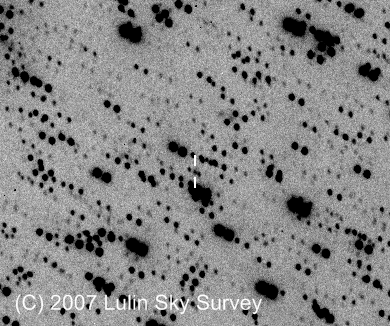
Comet McNaught: Image of pre-discovery
Jan 10th

I just know that I had a near-miss to my second comet discovery in late 2007, since the Minor Planet Center has just reported the identification made by Mike Meyer, that three observations I made in late 2007 was actually linked with a recent discovered comet, but that's largely caused by bad luck instead of careless review of candidates -- see above.
This tiny snow ball, is now recognized as Comet McNaught, designed P/2008 Y3, it was found at the New Year's Eve of 2009 by Australian astronomer Rob McNaught. I had received a warm welcome by Rob during my visit to the Siding Spring Observatory, and he gave me a beautiful post of the Great Daylight Comet he found (C/2006 P1), as well as his signature and words, "May you discovered more comets!" However, he has taken one from my hand ![]() Oops, Rob, I'm not blaming you -- because it was still two months before you wrote the words when I detected it, we were both not aware of such an occasion being presenting.
Oops, Rob, I'm not blaming you -- because it was still two months before you wrote the words when I detected it, we were both not aware of such an occasion being presenting.
The self-developed reduction pipeline did detected the faint dot although it was then running through the milky way, and was "encounted" with a bright star (the encounted image was neglected when making the image you see). As the comet was then about 3.94 a.u. from the Earth (about 590 million kilometers), the cometary feature was rather weak, so it's not surprising for me to count it as an asteroid at that time. Anyway, congratulations for your 45th comet, Rob! (Yes, Rob is the most profit individual discoverer in the history by far)
Rob McNaught (right) and me in front of the Uppsala Dome, Siding Spring Observatory

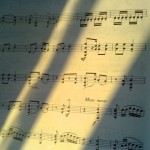



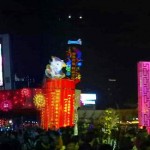
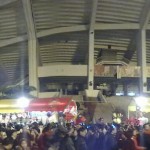


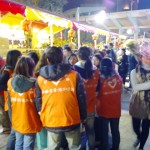
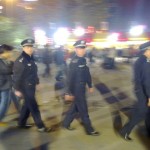
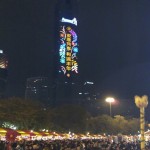
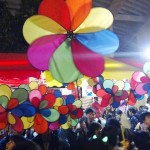
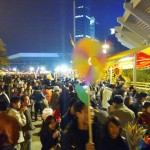




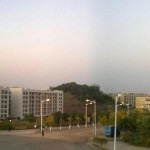




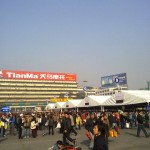

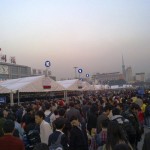
![大学城是飙车的好去处[07.10.25]](https://y234.cn/wp-content/uploads/2009/01/e59bbee5838f069-150x150.jpg)
![飙车胜地:中环路[07.10.09]](https://y234.cn/wp-content/uploads/2009/01/e59bbee5838f002-150x150.jpg)
![飙车途中[07.10.09]](https://y234.cn/wp-content/uploads/2009/01/e59bbee5838f005-150x150.jpg)
![中大某热门讲座[07.10.09]](https://y234.cn/wp-content/uploads/2009/01/e59bbee5838f010-150x150.jpg)
![老师示范如何进行头部包扎[07.10.10]](https://y234.cn/wp-content/uploads/2009/01/e59bbee5838f022-150x150.jpg)
![假冒伤员[07.10.10]](https://y234.cn/wp-content/uploads/2009/01/e59bbee5838f023-150x150.jpg)
![午饭以后[07.10.16]](https://y234.cn/wp-content/uploads/2009/01/e59bbee5838f033-150x150.jpg)
![为小黑卖广告[07.10.17]](https://y234.cn/wp-content/uploads/2009/01/e59bbee5838f036-150x150.jpg)
![中环路日落[07.10.19]](https://y234.cn/wp-content/uploads/2009/01/e59bbee5838f045-150x150.jpg)
![内内环路[07.10.22]](https://y234.cn/wp-content/uploads/2009/01/e59bbee5838f052-150x150.jpg)
![概率统计课[07.10.23]](https://y234.cn/wp-content/uploads/2009/01/e59bbee5838f060-150x150.jpg)
![剑术[07.10.23]](https://y234.cn/wp-content/uploads/2009/01/e59bbee5838f061-150x150.jpg)
![Guang Zhou Da Xue [07.10.25]](https://y234.cn/wp-content/uploads/2009/01/e59bbee5838f068-150x150.jpg)
![下课[08.01.09]](https://y234.cn/wp-content/uploads/2009/01/e59bbee5838f013-150x150.jpg)
![贵娇师妹可是爬山高手[08.04.17]](https://y234.cn/wp-content/uploads/2009/01/e59bbee5838f0611-150x150.jpg)
![澳大利亚帽[08.03.01]](https://y234.cn/wp-content/uploads/2009/01/e59bbee5838f001-150x150.jpg)
![基士兰广场音乐会[08.04.08]](https://y234.cn/wp-content/uploads/2009/01/e59bbee5838f031-150x150.jpg)
![这幅地铁广告挺有创意[08.07.16]](https://y234.cn/wp-content/uploads/2009/01/e59bbee5838f381-150x150.jpg)
![奥运火炬传递一瞥[08.05.07]](https://y234.cn/wp-content/uploads/2009/01/e59bbee5838f030-150x150.jpg)
![实验室“地震”[08.05.14]](https://y234.cn/wp-content/uploads/2009/01/e59bbee5838f057-150x150.jpg)
![老弟[08.05.17]](https://y234.cn/wp-content/uploads/2009/01/e59bbee5838f080-150x150.jpg)
![广州市罕见日落[08.05.29]](https://y234.cn/wp-content/uploads/2009/01/e59bbee5838f140-150x150.jpg)
![广州市罕见日落[08.05.29]](https://y234.cn/wp-content/uploads/2009/01/e59bbee5838f142-150x150.jpg)
![广州市罕见日落[08.05.29]](https://y234.cn/wp-content/uploads/2009/01/e59bbee5838f143-150x150.jpg)
![蒲公英盛开时节[08.06.02]](https://y234.cn/wp-content/uploads/2009/01/e59bbee5838f149-150x150.jpg)
![太阳直射[08.06.19]](https://y234.cn/wp-content/uploads/2009/01/e59bbee5838f207-150x150.jpg)
![水浸[08.06.19]](https://y234.cn/wp-content/uploads/2009/01/e59bbee5838f220-150x150.jpg)
![云影[08.06.20]](https://y234.cn/wp-content/uploads/2009/01/e59bbee5838f230-150x150.jpg)
![大学城月出[08.06.20]](https://y234.cn/wp-content/uploads/2009/01/e59bbee5838f235-150x150.jpg)
![呃?[08.06.26]](https://y234.cn/wp-content/uploads/2009/01/e59bbee5838f252-150x150.jpg)
![叫楼[08.06.26]](https://y234.cn/wp-content/uploads/2009/01/e59bbee5838f254-150x150.jpg)
![台风过境[08.07.01]](https://y234.cn/wp-content/uploads/2009/01/e59bbee5838f270-150x150.jpg)
![大锅盖[08.07.02]](https://y234.cn/wp-content/uploads/2009/01/e59bbee5838f299-150x150.jpg)
![传设学院楼[08.07.04]](https://y234.cn/wp-content/uploads/2009/01/e59bbee5838f321-150x150.jpg)
![日落实验室[08.07.04]](https://y234.cn/wp-content/uploads/2009/01/e59bbee5838f325-150x150.jpg)
![风云突变[08.07.07]](https://y234.cn/wp-content/uploads/2009/01/e59bbee5838f341-150x150.jpg)
![三剑客[08.07.10]](https://y234.cn/wp-content/uploads/2009/01/e59bbee5838f356-150x150.jpg)
![大学城日落[08.07.10]](https://y234.cn/wp-content/uploads/2009/01/e59bbee5838f361-150x150.jpg)
![莫名烟雾[08.12.24]](https://y234.cn/wp-content/uploads/2009/01/e59bbee5838f400-150x150.jpg)
![坏笑[08.09.02]](https://y234.cn/wp-content/uploads/2009/01/e59bbee5838f0021-150x150.jpg)
![点[08.09.02]](https://y234.cn/wp-content/uploads/2009/01/e59bbee5838f003-150x150.jpg)
![诡异的天[08.09.04]](https://y234.cn/wp-content/uploads/2009/01/e59bbee5838f009-150x150.jpg)
![成长的柠檬树[08.09.15]](https://y234.cn/wp-content/uploads/2009/01/e59bbee5838f028-150x150.jpg)
![08级在军训[08.09.17]](https://y234.cn/wp-content/uploads/2009/01/e59bbee5838f0331-150x150.jpg)
![云[08.09.24]](https://y234.cn/wp-content/uploads/2009/01/e59bbee5838f042-150x150.jpg)
![台风黑格比过境[08.09.24]](https://y234.cn/wp-content/uploads/2009/01/e59bbee5838f0471-150x150.jpg)
![世界上本没有路[08.09.25]](https://y234.cn/wp-content/uploads/2009/01/e59bbee5838f049-150x150.jpg)
![&小石头[08.09.25]](https://y234.cn/wp-content/uploads/2009/01/e59bbee5838f0571-150x150.jpg)
![&小京花[08.09.25]](https://y234.cn/wp-content/uploads/2009/01/e59bbee5838f059-150x150.jpg)
![成长的柠檬树[08.10.26]](https://y234.cn/wp-content/uploads/2009/01/e59bbee5838f099-150x150.jpg)
![眼睛猫[08.10.28]](https://y234.cn/wp-content/uploads/2009/01/e59bbee5838f102-150x150.jpg)
![打乒乓球[08.10.29]](https://y234.cn/wp-content/uploads/2009/01/e59bbee5838f120-150x150.jpg)
![斩[08.11.05]](https://y234.cn/wp-content/uploads/2009/01/e59bbee5838f1491-150x150.jpg)
![荷兰乐团访华[08.11.05]](https://y234.cn/wp-content/uploads/2009/01/e59bbee5838f166-150x150.jpg)
![云[08.11.08]](https://y234.cn/wp-content/uploads/2009/01/e59bbee5838f175-150x150.jpg)

![日落[08.11.09]](https://y234.cn/wp-content/uploads/2009/01/e59bbee5838f185-150x150.jpg)
![月出[08.11.09]](https://y234.cn/wp-content/uploads/2009/01/e59bbee5838f187-150x150.jpg)
![日落[08.11.09]](https://y234.cn/wp-content/uploads/2009/01/e59bbee5838f188-150x150.jpg)
![日落[08.11.09]](https://y234.cn/wp-content/uploads/2009/01/e59bbee5838f191-150x150.jpg)
![日落[08.11.10]](https://y234.cn/wp-content/uploads/2009/01/e59bbee5838f200-150x150.jpg)
![月出[08.11.11]](https://y234.cn/wp-content/uploads/2009/01/e59bbee5838f215-150x150.jpg)
![日落[08.11.11]](https://y234.cn/wp-content/uploads/2009/01/e59bbee5838f221-150x150.jpg)
![月出[08.11.11]](https://y234.cn/wp-content/uploads/2009/01/e59bbee5838f223-150x150.jpg)
![眺望[08.11.11]](https://y234.cn/wp-content/uploads/2009/01/e59bbee5838f225-150x150.jpg)
![眺望(蓝色版)[08.11.11]](https://y234.cn/wp-content/uploads/2009/01/e59bbee5838f226-150x150.jpg)
![日落[08.11.11]](https://y234.cn/wp-content/uploads/2009/01/e59bbee5838f228-150x150.jpg)
![日落[08.11.11]](https://y234.cn/wp-content/uploads/2009/01/e59bbee5838f234-150x150.jpg)
![金星与木星[08.11.11]](https://y234.cn/wp-content/uploads/2009/01/e59bbee5838f240-150x150.jpg)
![老师与学生互换[08.11.19]](https://y234.cn/wp-content/uploads/2009/01/e59bbee5838f251-150x150.jpg)
![天空的微笑[08.12.01]](https://y234.cn/wp-content/uploads/2009/01/e59bbee5838f266-150x150.jpg)
![晨希助理[08.12.01]](https://y234.cn/wp-content/uploads/2009/01/e59bbee5838f290-150x150.jpg)
![七中[08.12.07]](https://y234.cn/wp-content/uploads/2009/01/e59bbee5838f342-150x150.jpg)
![天河[08.12.11]](https://y234.cn/wp-content/uploads/2009/01/e59bbee5838f358-150x150.jpg)
![林[08.12.12]](https://y234.cn/wp-content/uploads/2009/01/e59bbee5838f364-150x150.jpg)
![光学飞踹[08.12.17]](https://y234.cn/wp-content/uploads/2009/01/e59bbee5838f377-150x150.jpg)
![桥[08.12.18]](https://y234.cn/wp-content/uploads/2009/01/e59bbee5838f380-150x150.jpg)
![桥[08.12.18]](https://y234.cn/wp-content/uploads/2009/01/e59bbee5838f388-150x150.jpg)
![素描[08.12.25]](https://y234.cn/wp-content/uploads/2009/01/e59bbee5838f403-150x150.jpg)




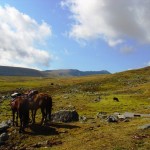

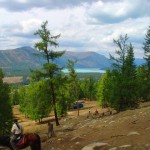


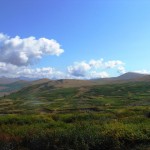
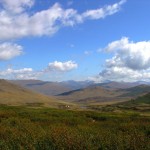


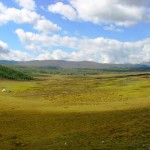
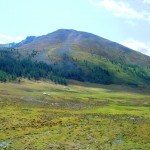
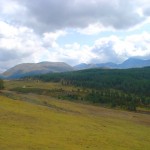
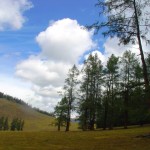
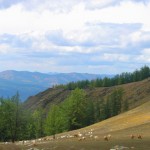
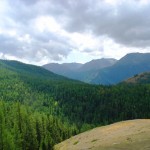
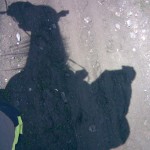

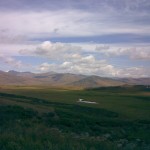




























最新评论 Recent Comments